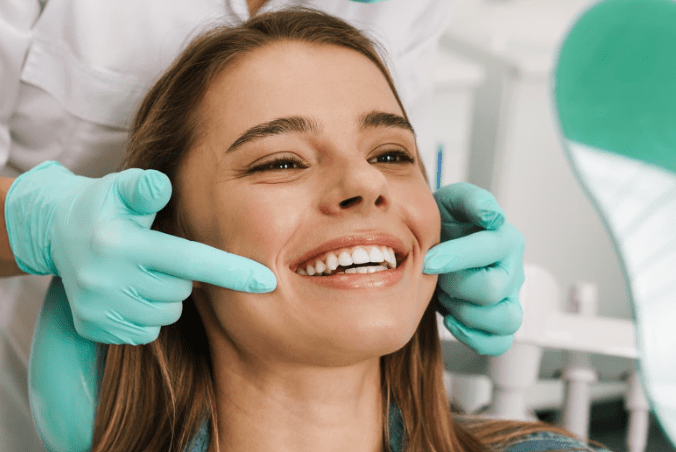
Dental sensors are revolutionizing family dentistry, making routine check-ups faster and more efficient. These innovative tools improve diagnostic accuracy, allowing dentists to detect issues earlier and provide better care for patients of all ages. As technology continues to evolve, understanding the impact of dental sensors on oral health can empower families to make informed decisions about their dental care.
Overview of Dental Sensors
Dental sensors, such as the ProDENT dental xray sensor, are advanced tools that significantly improve the diagnostic capabilities in family dentistry. Devices like these streamline routine check-ups, enhancing both accuracy and efficiency in identifying dental issues.
Definition and Types of Dental Sensors
Dental sensors are electronic devices that capture images or data related to a patient’s oral health. Common types include:
- Digital X-ray Sensors: These sensors replace traditional film x-rays, providing immediate digital images while reducing radiation exposure.
- Intraoral Cameras: Small cameras allow dentists to view detailed images inside a patient’s mouth, aiding in patient education and treatment planning.
- Periodontal Probes with Sensors: These measure gum tissue health digitally, offering precise readings for better assessment of periodontal conditions.
Key Features and Technology
Dental sensors incorporate several key features that improve their functionality:
- High-resolution Imaging: Enhanced image quality allows for better detection of cavities and other dental issues.
- Real-time Data Transmission: Instantaneous transfer of data enables quicker diagnosis and treatment decisions.
- User-friendly Interfaces: Simplified controls facilitate ease of use for dental professionals during examinations.
- Integration with Practice Management Software: Seamless connectivity improves record keeping and patient management within dental practices.
These technological advancements position dental sensors as essential tools in modern family dentistry, promoting optimal oral health care for patients across all age groups.
Benefits of Dental Sensors in Family Dentistry
Dental sensors significantly improve family dentistry practices, improving both diagnostic capabilities and patient interactions.
Improved Diagnostic Accuracy
Dental sensors provide high-resolution imaging that allows dentists to detect dental issues more accurately. These devices, such as digital X-ray sensors and intraoral cameras, capture detailed images of teeth and gums, enabling early identification of conditions like cavities or periodontal disease. Real-time data transmission ensures that dentists access up-to-date information during consultations, which facilitates prompt treatment decisions. Studies indicate that the utilization of these advanced tools can reduce misdiagnosis rates by up to 30%, ultimately leading to better health outcomes for patients.
Enhanced Patient Experience
Dental sensors contribute to a more comfortable and efficient experience for patients. With their ability to produce immediate results, patients spend less time waiting for diagnostics. Additionally, the use of intraoral cameras allows practitioners to show patients real-time images of their oral health conditions. This visual aid fosters better understanding and communication between dentists and families regarding treatment options. The user-friendly interfaces of these technologies also minimize discomfort during procedures, creating a positive environment that encourages regular dental visits among all age groups.
Implementation of Dental Sensors
Implementing dental sensors in family dentistry involves several key factors, from cost considerations to training and integration into existing practices. These aspects play a vital role in maximizing the benefits of this technology.
Cost Considerations
Initial costs for dental sensors can vary significantly based on type and manufacturer. Digital X-ray sensors range from $3,000 to $10,000 each, while intraoral cameras typically fall between $1,500 and $5,000. Periodontal probes with sensors usually cost around $1,200 to $2,500. Although the upfront investment is substantial, many practices see a return on investment through improved diagnostic capabilities and increased patient satisfaction. Long-term savings arise from reduced retakes of images due to higher accuracy and efficiency in procedures.
Training and Integration into Practice
Training staff on new dental sensor technology is crucial for successful implementation. Sessions should cover operation protocols, data interpretation, and troubleshooting techniques. Most manufacturers offer training programs or online resources that assist in this process. Additionally, integrating these devices with existing practice management software streamlines workflow by allowing easy access to patient records and imaging data. Effective integration enhances communication among team members while ensuring seamless patient experiences during visits.
Challenges and Considerations
While dental sensors offer significant advantages, several challenges and considerations exist for family dentistry practices.
Potential Drawbacks
Dental sensors can incur high initial costs that may deter some practices from adoption. Digital X-ray sensors typically range from $3,000 to $10,000, while intraoral cameras and periodontal probes with sensors cost between $1,500 to $5,000 and $1,200 to $2,500 respectively. Ongoing maintenance expenses also arise; these include software updates and potential repairs. Additionally, reliance on technology could lead to issues if equipment malfunctions or requires extensive training for optimal use.
Patient Privacy and Data Security
Patient privacy poses a critical concern with the integration of dental sensors into practice workflows. Electronic data collection increases the risk of data breaches or unauthorized access to sensitive health information. Dental practices must implement robust security measures such as encryption protocols and secure password management systems to safeguard patient data. Compliance with regulations like HIPAA ensures that patient confidentiality remains protected during digital interactions.
Conclusion
Dental sensors have truly revolutionized family dentistry by enhancing diagnostic capabilities and improving patient care. Their ability to deliver high-resolution images and real-time data not only streamlines check-ups but also fosters better communication between dentists and patients. As families seek optimal oral health solutions, these advanced tools provide a significant advantage in early detection and treatment of dental issues.
While challenges like initial costs and training exist, the long-term benefits outweigh the hurdles. By investing in dental sensors, practices can improve their service quality while ensuring a positive experience for patients of all ages. Embracing this technology is essential for modern family dentistry aiming to maintain excellent oral health standards.



